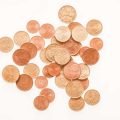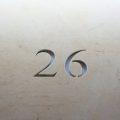Introduction to Elder Futhark Runes and Their British Reception
The Elder Futhark runes, a set of ancient symbols originating from early Germanic cultures, have long fascinated historians, occultists, and spiritual seekers alike. Comprising 24 distinct characters, these runes were used for writing, divination, and magical purposes across Scandinavia and parts of continental Europe from roughly the 2nd to the 8th centuries CE. While their origins lie outside the British Isles, the resonance of these symbols has steadily grown among practitioners in the UK, who appreciate both their historical mystique and practical application in modern spirituality. In Britain today, Elder Futhark runes are often explored as tools for personal insight, meditation, and connection with ancestral traditions—an approach that blends respect for their roots with a distinctly local flavour. The British reception of runes is shaped by our own landscape of myth and folklore, making them a meaningful addition to contemporary practices rooted in both curiosity and reverence.
2. Selecting Local Materials for Your Rune Set
When crafting your own Elder Futhark rune set in Britain, selecting the right materials is both a practical and symbolic step. Using locally sourced materials not only grounds your practice in the British landscape but also adds a layer of authenticity to your runes. Here’s some guidance on how to choose and source traditional or local options such as British woods, stones, or clays.
Choosing the Right Material
Your selection process should consider durability, ease of carving or shaping, and personal resonance with the material. Each type offers unique properties:
| Material | Source | Traditional Significance | Notes for Use |
|---|---|---|---|
| Wood | Native trees (e.g., oak, ash, yew, rowan) | Symbolic in Norse and Celtic lore; each species carries its own meaning | Choose seasoned wood; avoid protected species; ensure ethically sourced |
| Stone | Local beaches, rivers, or quarries (e.g., flint, slate, river pebbles) | Enduring and elemental; historically used for tool-making in Britain | Select smooth, flat stones; always gather respectfully and legally |
| Clay | British clay deposits (found near rivers or bought from craft suppliers) | Malleable and earthy; connects to ancient British pottery traditions | Airdry or kiln-fire for durability; can be painted or inscribed before firing |
Sourcing Ethically and Sustainably
Respectful Gathering: Always gain permission if collecting from private land and be mindful of conservation areas. Harvesting windfallen wood or stones from public beaches (where permitted) is ideal. Foraged materials should be taken sparingly to maintain natural balance.
Local Connections: Consider visiting local timber merchants, stonemasons, or potteries. Not only does this support local craftspeople, but it may also give you access to offcuts or remnants perfect for rune making.
Example: British Woods Commonly Used for Runes
| Tree Species | Cultural Significance | Preferred Use in Rune Crafting |
|---|---|---|
| Oak | Strength, protection, endurance (sacred to Druids) | Main rune sets or keepsake runes due to hardness and longevity |
| Ash | The World Tree (Yggdrasil); connection between realms | Easily carved; good for beginners seeking tradition and symbolism |
| Rowan | Protection against enchantment; associated with magic in British folklore | Pocket talismans or travel sets due to lightweight nature |
| Elder | Mysticism and transformation; often linked with spiritual journeys | Ceremonial runes or special-purpose sets only (never cut without permission) |
Practical Tips for Selection and Preparation
– Collect materials on a clear day if possible—this is both practical and seen as auspicious.
– Clean wood of bark and sand down rough edges before marking.
– Stones should be washed thoroughly; avoid using those with cracks.
– Clay should be kneaded well to remove air pockets before shaping.
– Take time to reflect on your connection with the material as you prepare it; intention is as important as craftsmanship.
This careful approach ensures that your runes are not just objects but living symbols rooted in the land beneath your feet. In the next section, we will explore how to shape and inscribe your chosen materials into meaningful Elder Futhark runes.

3. Crafting Techniques with a British Touch
Creating your own Elder Futhark rune set is not only a spiritual journey, but also an engaging craft steeped in tradition. Here’s a step-by-step guide to shaping, carving, and finishing your runes, inspired by British regional craftsmanship and local materials.
Step 1: Selecting Your Materials
Begin by sourcing materials that resonate with your intent and the British landscape. Ash, oak, or yew are classic choices, each carrying its own folklore significance. Visit local woodworkers or search for fallen branches during a countryside walk—always seek permission if on private land. Alternatively, pebbles from a Cornish beach or stones from a Scottish riverbank add a regional flair.
Step 2: Shaping the Blanks
Using a small saw or penknife (a traditional British pocket tool), cut your chosen material into uniform discs or tiles, roughly the size of a two-pence coin. Sand down the edges with fine-grit sandpaper until smooth to the touch. This process is meditative—take your time and infuse your intentions into each blank as you work.
Step 3: Carving the Runes
Mark each rune lightly with a pencil before carving. Employ a woodcarving chisel or a sharp craft knife—tools found in any well-equipped British shed. If working with stone, use a Dremel rotary tool with an engraving tip. Always carve away from yourself for safety. Traditionalists may choose to chant the name of each rune as it is inscribed, echoing ancient practice.
Step 4: Finishing Touches
Wipe off any debris and gently polish the runes with beeswax polish—a nod to rural British beekeeping heritage—or linseed oil for a natural finish. Let them dry thoroughly. If desired, highlight the carved symbols using natural ochre pigment or red paint, reminiscent of early rune sets unearthed in Britain.
Step 5: Storage and Handling
Store your completed runes in a pouch made from British wool or linen. Many crafters sew their own using scraps from old garments—a sustainable approach rooted in British thriftiness. Handle each rune respectfully; this fosters connection between you and your newly crafted set.
Tip for Modern Makers
If you’re new to crafting, consider visiting local craft fairs or historical reenactments for hands-on demonstrations and advice from experienced artisans. The sharing of knowledge has always been at the heart of British folk traditions.
4. Inscribing and Marking Runes: British Symbolism and Folklore
When crafting your Elder Futhark rune set from a British perspective, the act of inscribing each rune is more than a technical process—it’s an opportunity to weave in local meaning, folklore, and symbolism that resonate with the British landscape and heritage. Traditionally, runes are carved or burned into wood, stone, or bone, but here you might choose native woods like oak, yew, or rowan—each steeped in its own Celtic and Anglo-Saxon lore.
Selecting Symbols and Motifs
While the Elder Futhark symbols themselves are Norse in origin, there’s scope to enrich their significance by combining them with British folk motifs. For example, you could pair runes representing protection (such as Algiz) with the image of a hare—a creature associated with luck and transformation in British folklore. Consider the following table for inspiration on how to blend runic symbols with local traditions:
| Rune | Traditional Meaning | British Folk Motif | Symbolic Interpretation |
|---|---|---|---|
| Algiz | Protection | Hare or Oak Leaf | Defence against misfortune; resilience rooted in ancient woods |
| Berkana | Growth & New Beginnings | Rowan Tree Berry | Nurturing new ventures; warding off evil spirits |
| Ehwaz | Movement & Progress | White Horse of Uffington | Steady advancement; harnessing ancestral guidance |
| Sowilo | The Sun & Success | Corn Dolly or Sun Wheel | Blessings for harvest; cyclical renewal of hope |
| Mannaz | The Self & Community | Knotwork or Stone Circle Motif | Interconnectedness; shared strength of community spirit |
Inscription Techniques: Practical Guidance for Makers in Britain
If you’re using hand tools such as knives or pyrography pens, take time to focus on the clarity of each line—precision matters not just aesthetically but energetically. In traditional British crafts, makers often chant or recite charms while working; you might recite a verse from local poetry or invoke blessings relevant to your area (such as referencing “the green hills of Somerset” or “the wild moors of Yorkshire”). This ritualistic approach infuses your runes with personal and geographical significance.
Cultural Layering: Giving Runes a Local Voice
After inscribing each rune symbol, consider colouring them with natural dyes derived from British plants—elderberry for purple hues or nettle for green. This not only highlights the design but also roots your set firmly in place-based tradition. Lastly, keep a small notebook to record which motifs and materials you used for each rune—a practice echoing both modern engineering logs and old grimoire keeping.
5. Consecrating and Empowering Your Rune Set in the UK
With your Elder Futhark runes crafted, the next essential step is consecration—imbuing each piece with meaning and intention, and firmly rooting them in the British landscape. This process is not only about blessing the runes; it’s about dedicating them to your practice using local traditions, weather patterns, and ritual practices that reflect a uniquely British sensibility.
Choosing a Sacred Space: Harnessing the British Landscape
The UK is rich with historic and naturally powerful sites—from ancient woodland clearings to windswept moors and stone circles. If possible, select a location that resonates with you personally or has historical significance, such as a secluded spot along a riverbank or an old yew grove. Even your garden or a quiet corner of a city park can serve as sacred space if approached with respect and intention. The land itself becomes an ally in your work, grounding your runes in Britain’s storied soil.
Weather as Ritual Partner
British weather is famously unpredictable, but this can add authenticity and energy to your consecration ritual. A misty morning invokes mystery; gentle rain may symbolise cleansing and renewal; bright sunlight brings clarity and strength. Instead of resisting the weather, incorporate its qualities into your ceremony—let the wind carry your intentions or allow the rain to wash over your runes for purification.
Ritual Practices: A Local Approach
Begin by laying out your rune set upon a cloth, perhaps one dyed in woad blue or another locally meaningful colour. Light a beeswax candle (symbolising hearth and home), or burn juniper or mugwort—herbs common to British hedgerows—for cleansing smoke. Speak aloud your intentions for each rune, invoking local spirits or ancestors if that feels appropriate. You might recite verses from Anglo-Saxon poetry or simply state your purpose in plain English—the key is sincerity.
Example Dedication Invocation
“By earth of this land, by sky above these stones, by water coursing through our hills, I dedicate these runes to truth, wisdom, and guidance.”
Closing the Ceremony
To finish, hold the entire set in both hands and visualise them glowing with energy drawn up from the ground beneath you. Thank the place, any spirits present, and yourself for undertaking this act. Wrap your runes securely—perhaps in a pouch sewn from British wool—and store them respectfully when not in use.
This combination of thoughtful method and local context ensures your rune set is not just empowered but deeply woven into the living fabric of Britain’s magical heritage.
6. Caring for and Using Your Runes in Everyday British Life
Once your Elder Futhark runes are created and consecrated, the way you care for and use them will deepen your connection to their wisdom. In the UK, with its damp climate and long-standing traditions of folk magic and craftsmanship, maintaining your runes involves both practical stewardship and a mindful approach to integration within daily routines or communal settings.
Storing Your Rune Set
British weather is often wet, so if your runes are made from wood or natural materials, keep them dry to prevent warping or mould. A classic approach is to store them in a pouch crafted from natural fabrics such as linen or wool—materials that have deep roots in British textile history. Alternatively, a small wooden box lined with soft cloth can add an extra layer of protection and tradition. Some practitioners choose pouches embroidered with their initials or symbols meaningful within British folklore, adding a personal touch.
Cleansing Your Runes
Regular cleansing ensures your rune set remains energetically clear. In Britain, you might use local elements: pass the runes through incense smoke (such as juniper or native heather), lay them out under moonlight during a clear night, or even place them on a windowsill during a typical British rainstorm—letting the sound and scent of rain symbolically wash away lingering energies. For those in urban areas, even a moment’s quiet breath over the runes can serve as an effective reset after each reading.
Integrating Runes Into Daily Practice
Brits often appreciate subtlety and ritual woven into everyday life. Drawing a daily rune before your morning tea can become a reflective habit, pairing ancient wisdom with modern routine. Many incorporate runes into journaling, using the meanings as prompts for self-reflection or creative writing. During group gatherings—be it a moot in a local pub’s snug or a circle in someone’s back garden—rune casting can foster connection, spark conversation about heritage, and honour the cycles of nature so beloved in British seasonal celebrations.
Tips for Group Use
- Establish respectful guidelines: Let everyone handle the runes with clean hands and intent.
- Share interpretations: British folklore is rich; encourage participants to relate rune meanings to local legends or personal experiences.
- Create atmosphere: Light beeswax candles or play traditional folk music to root the practice in local ambiance.
Nurturing Tradition
Caring for your runes is not just maintenance—it’s an ongoing relationship rooted in respect for craft and context. Whether used solo on a misty morning walk or shared at the hearth with friends, integrating your Elder Futhark set into British life keeps the tradition alive and evolving for generations to come.


